Warning: Huułens is not an edible harvest product. Do not ingest! ⚠️
Always wear gloves when handling huułens. ⚠️
Keep away/ out of reach of children and pets. ⚠️
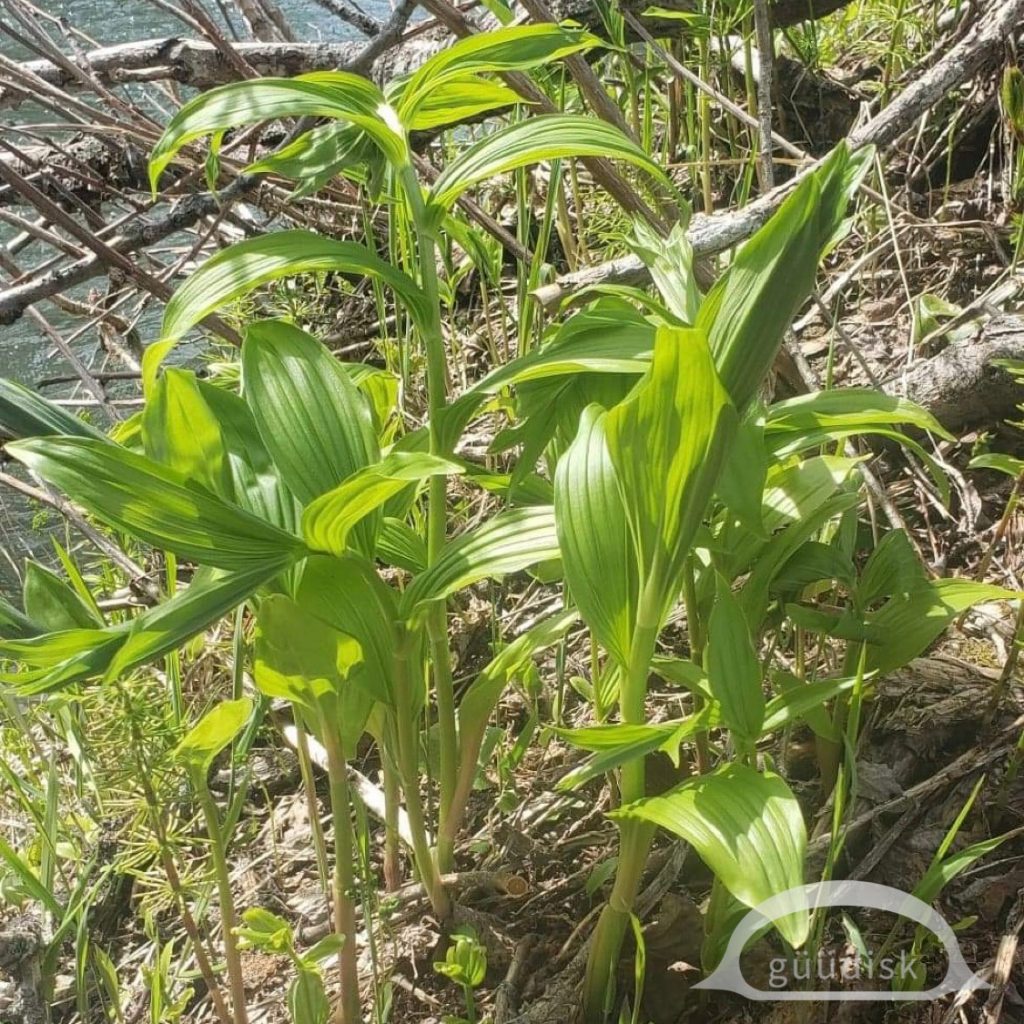
Stephen’s family, and community of Hartley Bay/Gitga’at, are very familiar with the medicinal properties of huułens [*huu/łens] – poison root; hellebore. Since meeting Stephen, I’ve come to learn about the poisonous plant and it’s benefits.

Huułens is a very powerful medicinal plant that is NOT harvested for consumption. Ts’msyen (Tsimshian people) use the plant to cleanse the air from sickness and ward off negative energies/spirits. It can also be used when making topical products – which we’ll talk about more later. 👇 Steve’s mother Ruby said that elders are always looking for huułens for their homes.
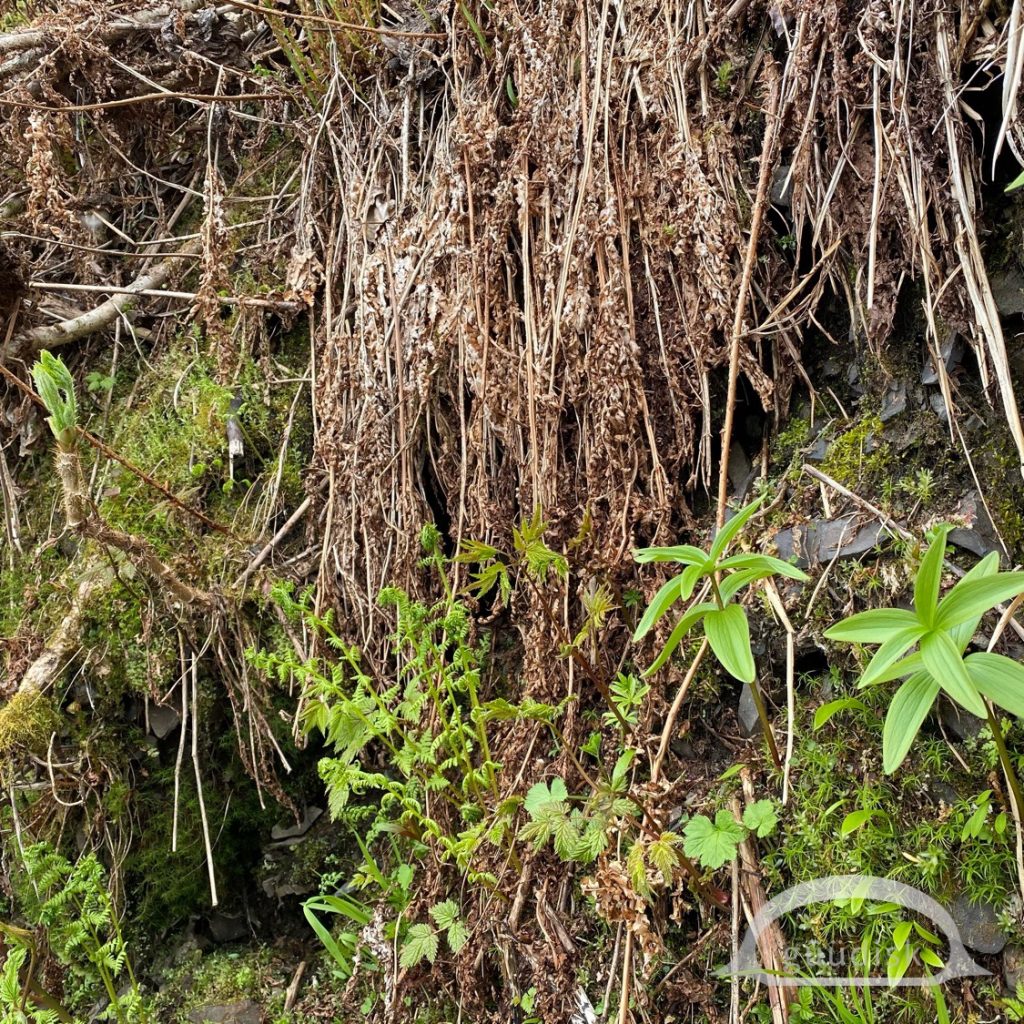
We harvested huułens near a fresh water stream. We saw two other medicinal plants growing nearby – wooms [wooms] – devils club and steti [*ste/ti] – stinging nettles . On this day, we only harvested the huułens.
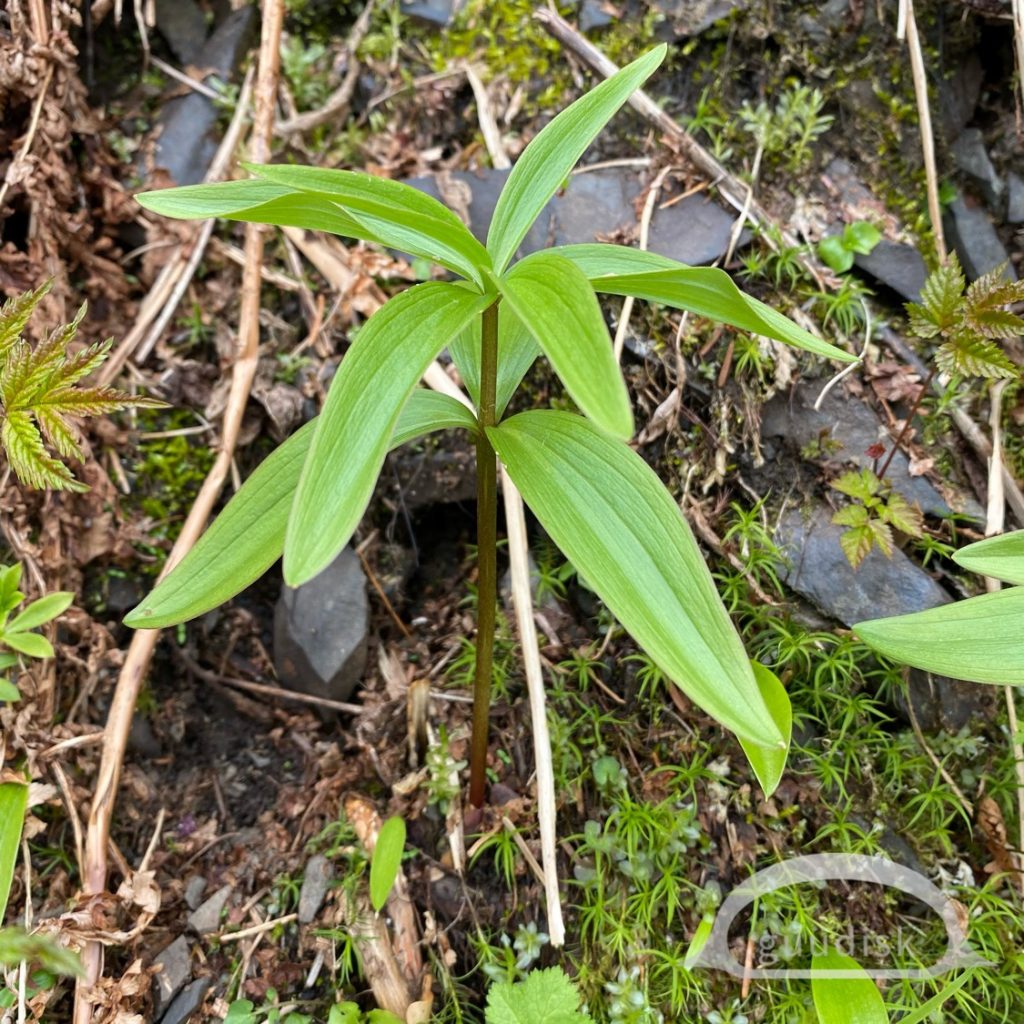
My mama Jennifer says not to harvest medicine from the road side or easily accessible locations, because you don’t know if someone else has put their energy onto those plants before you came along to harvest them! Those energies can negate the whole intention of trying to clear sickness and/or negative energies/spirits from your home. This saying goes for all types of medicinal harvesting. We found a harvesting spot that was out of the way, where people wouldn’t go.
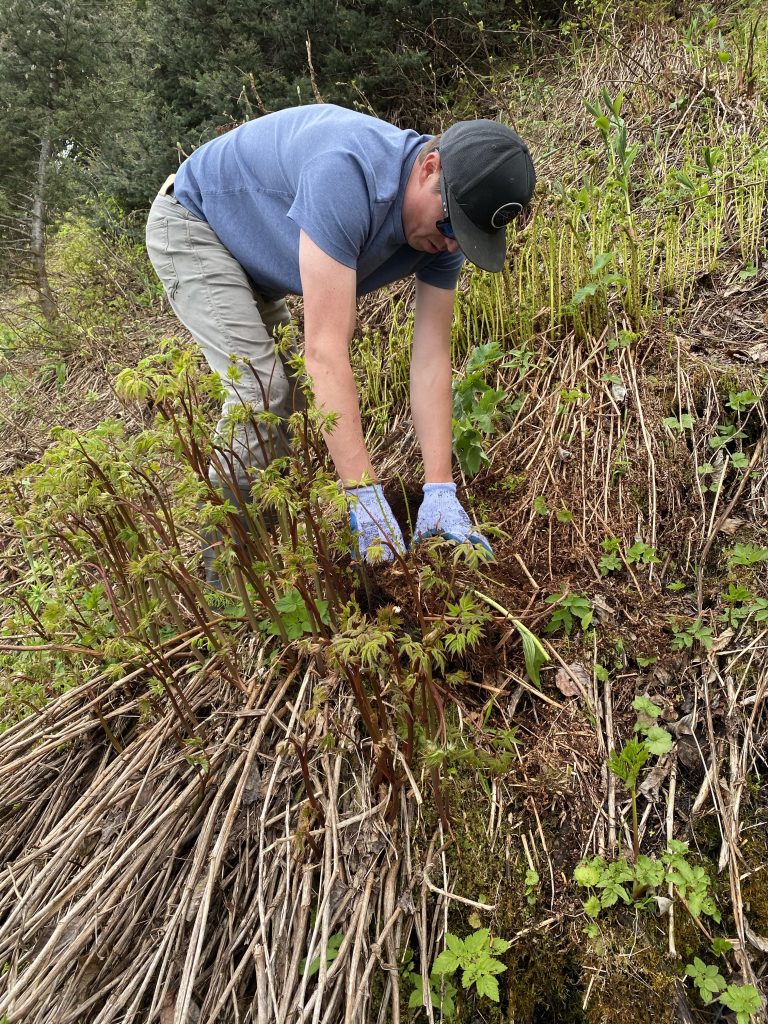
When harvesting huułens, ALWAYS wear gloves to protect your hands/skin. Ruby told us that the whole plant is poisonous – both root and stem. The scientific name is Veratrum viride. Below is a description of the toxic qualities of the plant:
Warning: POISONOUS PARTS: All parts. Toxic if eaten in large quantities. Symptoms include burning of mouth and throat, salivation, headache, stomach pain, vomiting, diarrhea, weakness, sweating, convulsions. Toxic Principle: Steroidal alkaloids. (Poisonous Plants of N.C.)
Wildflower.org
According to Wikipedia, there are 22 species of hellebore, and all of them are poisonous. ☠️
Even ingesting a small amount can be lethal due to toxic steroidal alkaloids present, especially in roots, shoots, and rhizomes.
Central Coast Biodiversity
Anytime we work with potentially toxic plants, chemicals or products (traditional products or otherwise) – we always aim to be as safe as possible. We do not share this blog lightly. Our goal is to help others learn how to harvest safely – especially if they’re going out there to harvest anyway.
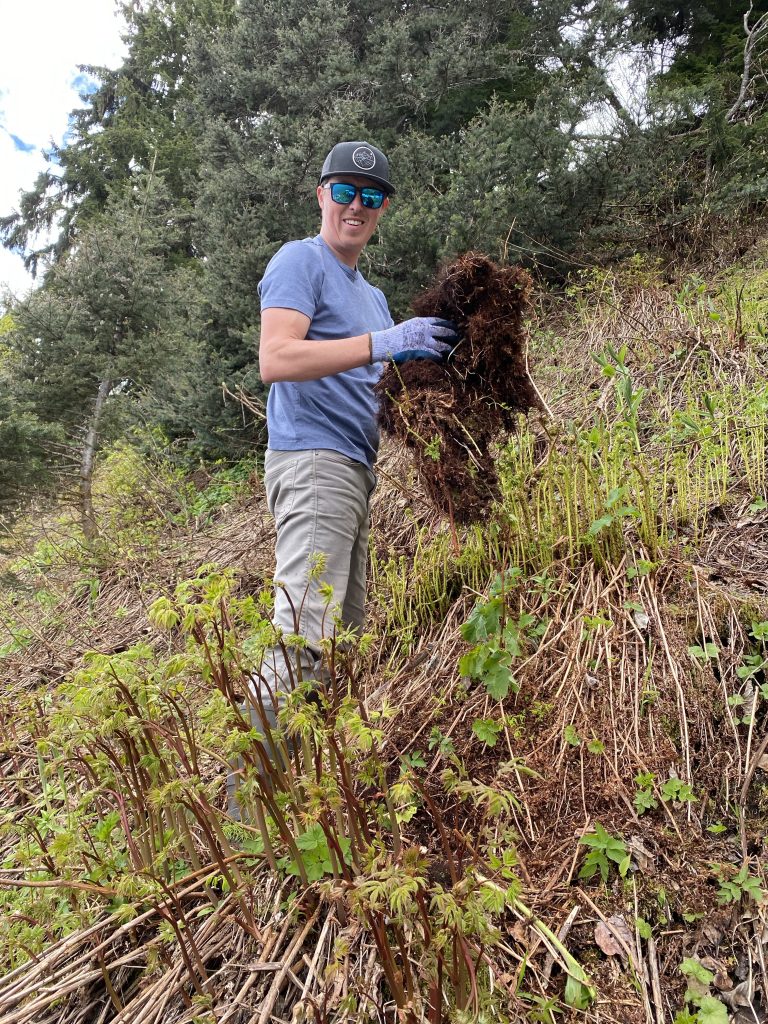
To harvest the plant, Stephen used a shovel to dig a decent perimeter around the plant itself. We’ve been told it’s also preferred to dig up huułens with a non-metal shovel or trowel. Some of the huułens we dug up were single stems, and some were in bunches of two or three. When digging up the plant, you want to collect the entire root system, because that is where the medicinal properties are concentrated.
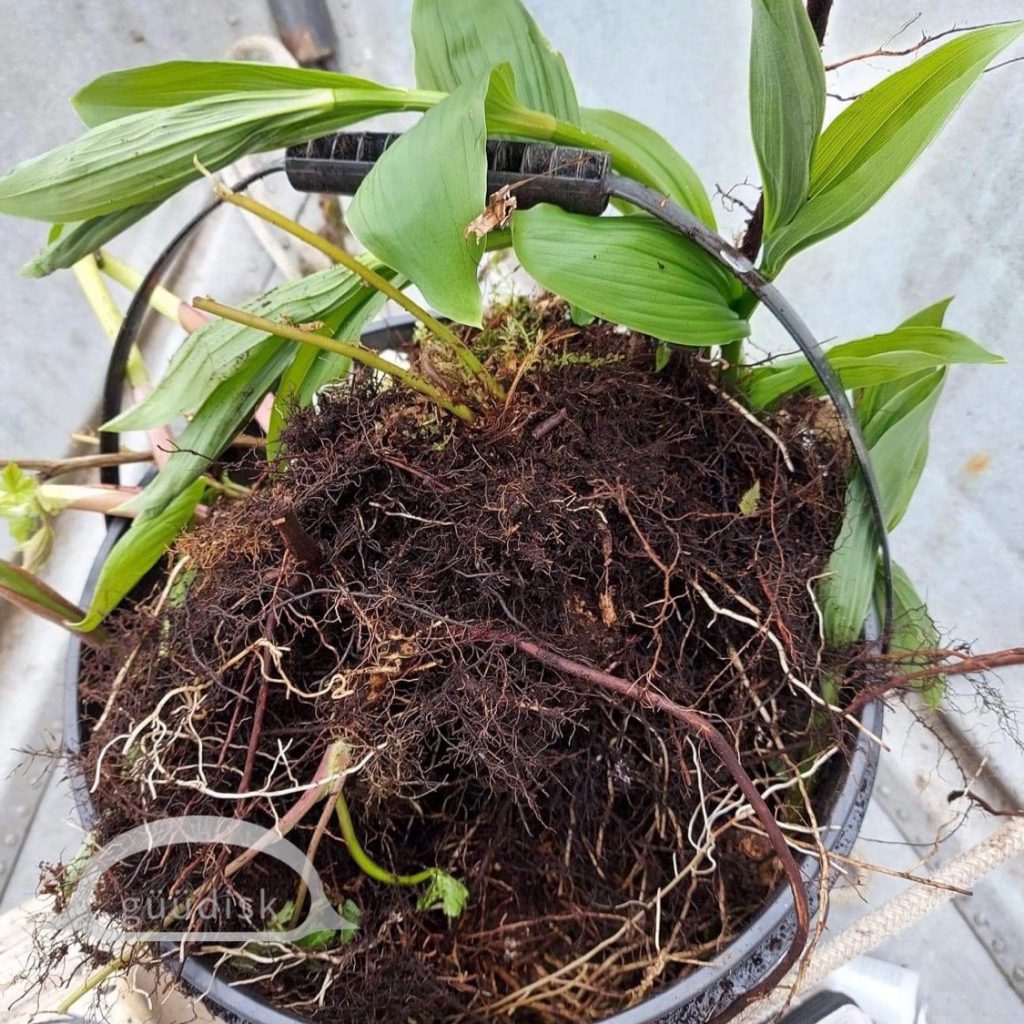
We put the huułens into a bucket until we were able to prepare them later on. We rinsed the huułens in fresh water to get rid of the excess dirt before getting ready to dry them. Another way to prepare them (possibly a preferred way) is to shake the loose dirt free, so as not to wash away the plant’s medicinal properties. Our thought process was that we didn’t want the excess dirt to fall off the roots and onto the floor as it dries (where our dog could reach it), so we opted to rinse the roots to remove the loose (potentially toxic) dirt.
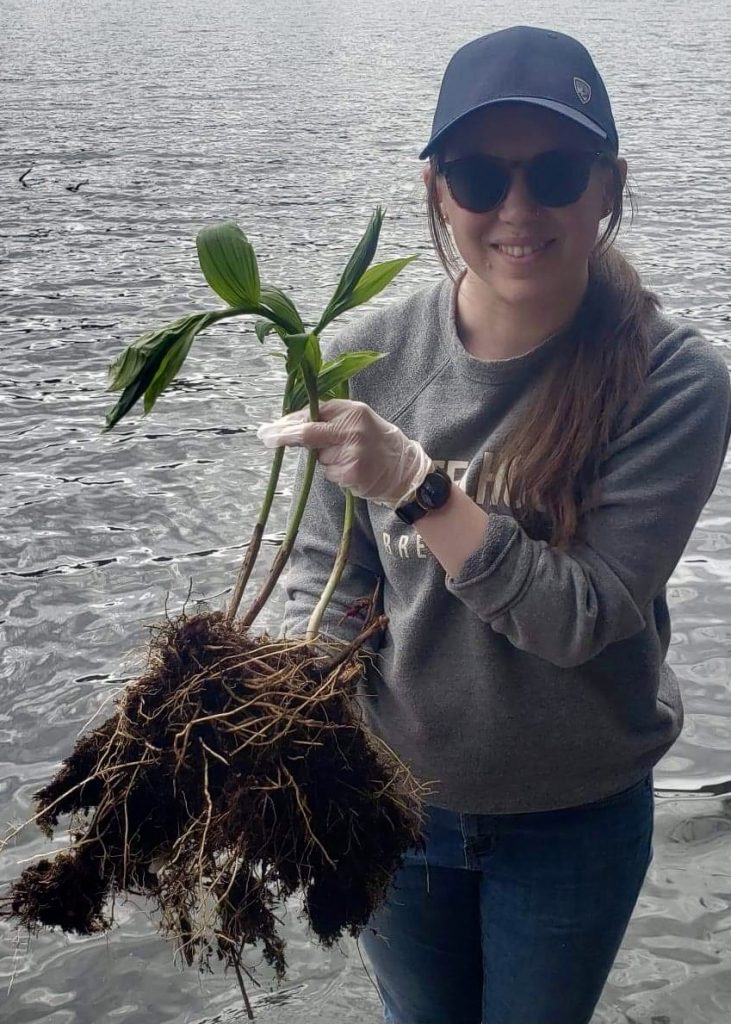
In between the roots, we found lots of soil, and fine roots from other nearby plants. It was a little time consuming to pick out the excess roots and dirt. But we figured that preparing them outside would be the best/safest way to handle the poison root. As I was preparing the roots (with gloves on), I used my fingers to gently pull the other roots away from the huułens.

Once you have your huułens all cleaned up, you can deliver it fresh to your elders and get them ready to use in your house. The roots are white and stringy, and can have multiple nodes. We broke the stem off about 1-2 inches above the root, but you can leave it longer if you prefer. Some of the stems also snapped off accidentally as we were working with the plant.
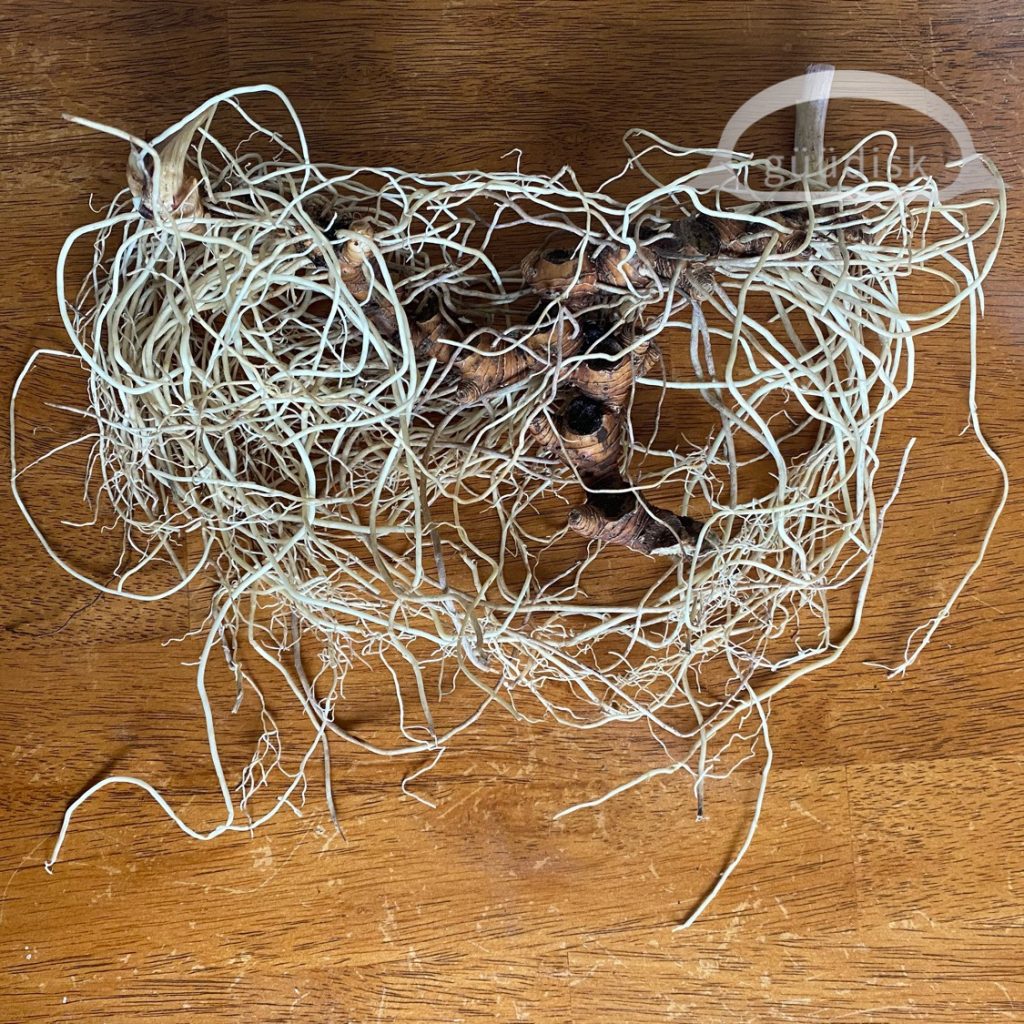
We use huułens in the house by drying the root above doorways. As the root dries, it is said to purify the air and prevent negative energies/spirits from entering your home. I also like this method of using huułens because it ensures the poison root is kept out of reach of children and pets!
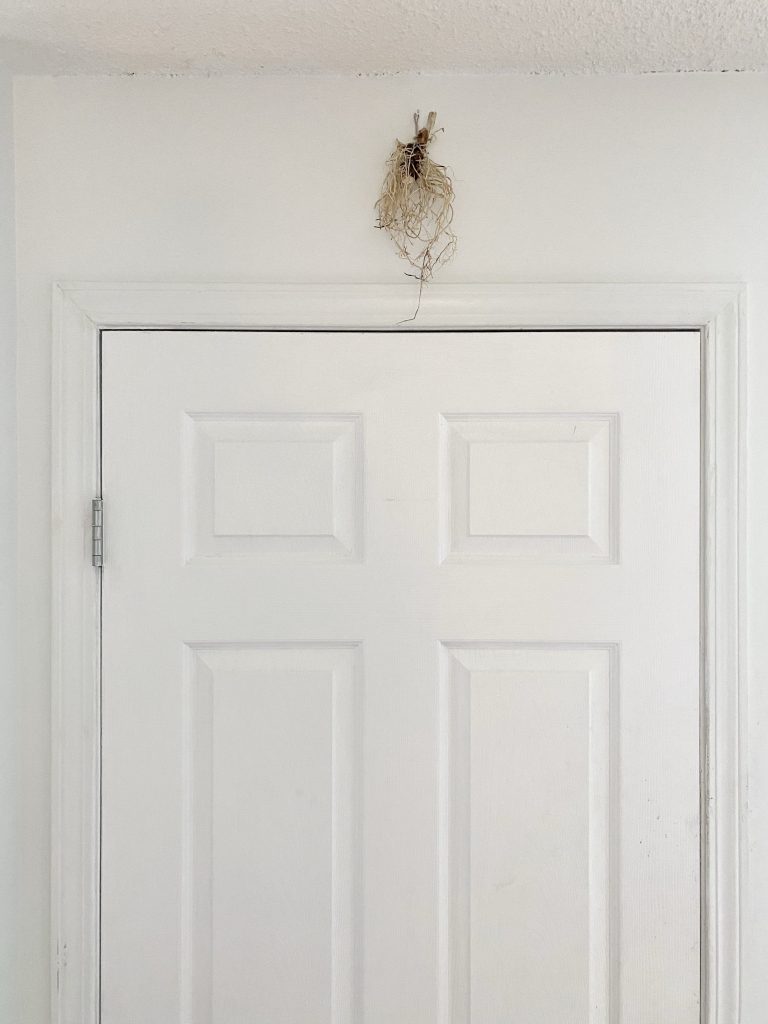
On the Sm’algyax Living Legacy Dictionary, the entry for huułens says:
the roots are heated on the stove to cleanse the air when there is sickness. Hellebore is also applied externally to treat arthritis and rheumatism, and used to kill lice
huułens [*huu/łens]
common noun. poisonroot; hellebore.
However, we have not utilized huułens as a topical treatment. We’ve only hung/dried the root above the doors of our house. We placed a piece of the root above the front and back doors, and put one in the upstairs hall of our house.
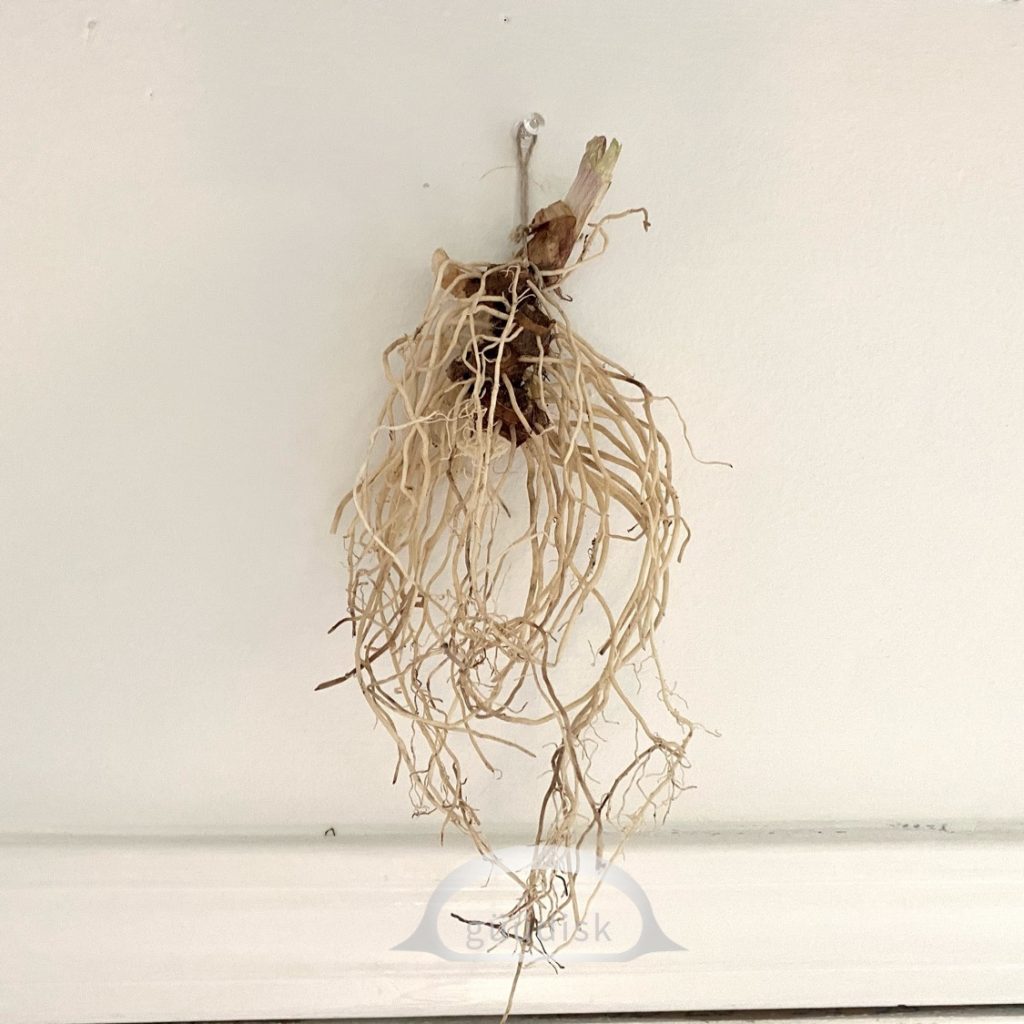
We were told that the more fresh your huułens is, the more benefit you’ll get from it. So it’s good to replace huułens every so often.
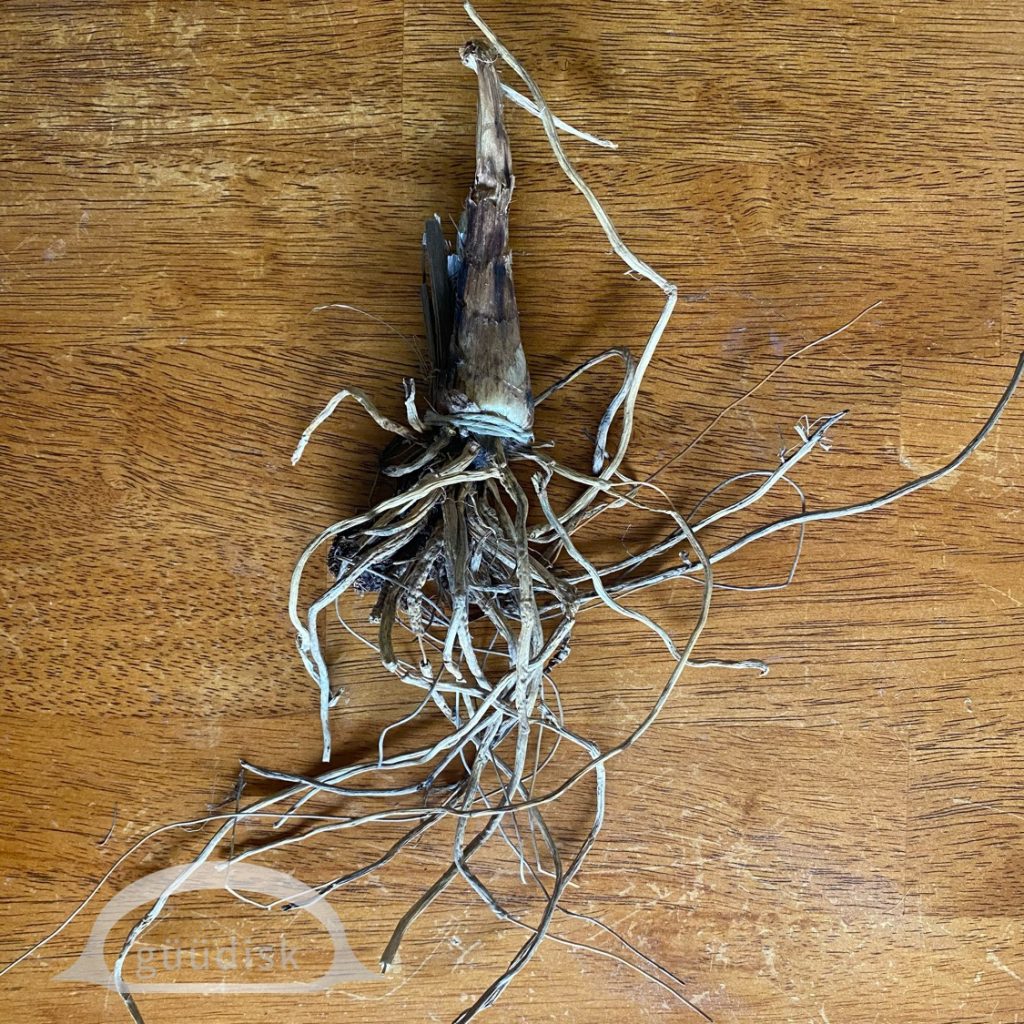
When Steve was in university, his grandma Millie would send him away to school with huułens to hang in his rental. She made sure to take good care of her grandson! ❤️
T’oyaxsut ‘nüün Mr. Campbell for providing the audio pronunciation for this blog post!
Follow güüdisk on Instagram for more harvesting photos, including additional info on harvesting huułens!
S&L – May 26, 2021